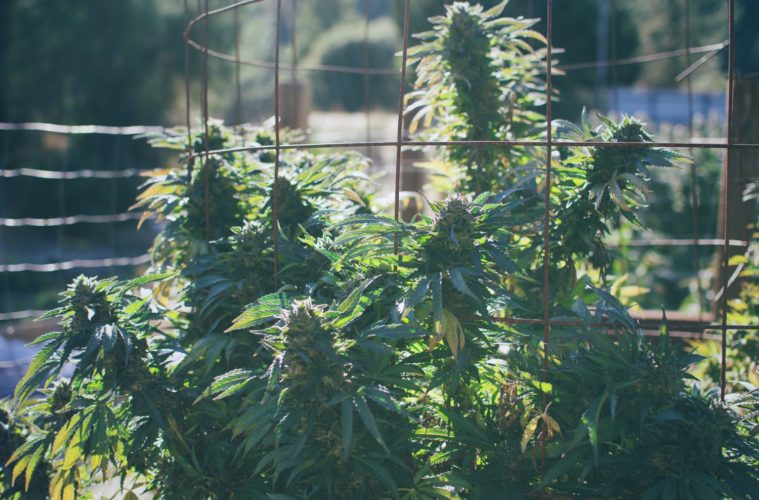The cannabis industry and its farmers currently face a brutal market. With many holding on by a thread, some wonder if the taxman could prove grim reaper come the new year.
Two weeks ago, the California Department of Tax and Fee Administration noted that since January 2018, total cannabis tax revenue to date is $3.12 billion. That number includes $1.58 billion in excise tax, $393.44 million in cultivation tax, and $1.15 billion in sales tax. That number also includes the $322.34 million that the state made in the third quarter of 2021. These numbers come despite the majority of the state’s municipalities still denying their residents access to the marketplace.
But at what cost?
The flip side, some would argue, is those numbers are in fact the backbone of the illicit market and additionally knee-cap small farmers trying to be competitive. After the initial high bar to enter the legal market and the bottlenecks of the supply chain making pot worse compared to the freshness of the streets, many point to taxes as the main driver of underground sales.
Worse, due to the overhead of the legal market, many farmers have been forced to play both sides of the market after initially hoping to go on the straight and narrow of a crime-free cannabis life following election night 2016. The burden of taxes and fees made that difficult for most as the pound price crept down over the last few years. Then in 2021, the floor really fell out from the market.
Now, as 2022 hits, those farmers and the wider industry and consumers will be hit with even higher taxes. The cultivation tax will be raised from $9.65 to $10.08 per dry-weight ounce of flower, from $2.87 to $3 for leaf, and from $1.35 to $1.41 for fresh material starting on January 1, 2022.
“The legal industry is already so burdened by excessive taxes and regulation that it cannot compete with unlicensed marketers,” says California NORML Director Dale Gieringer. “California needs to be reducing, not increasing cannabis taxes to make the legal market more competitive.”
Gieringer went on to explain the tax structure was essentially designed so in the event the market crashed, the state wouldn’t take the same hit the farmers would. That dry ounce tax is the same price whether your pounds go for $300 or $3,000.
“The cultivation tax was designed to bolster prices against a possible collapse in the legalized market,” said Gieringer, while noting he did once support the idea. “The fear was that if cannabis became as cheap as comparable herbal products like tea, the price could drop to a few dollars per pound, or just pennies per joint. In actuality, however, California’s costly taxes and regulations have raised the price for legal cannabis substantially above what it was prior to legalization.”
As Tim Blake prepares to get the tribe back together at The Emerald Cup next week, it’s been tough for him to watch what’s happening in his community.
“I got guys that have mixed light that have 500,000 pounds put away and they’ve sold 10. The trimmers want to get paid, everybody is trying to get their money,” Blake told L.A. Weekly. Blake added it’s at the point that people are now selling farms, having nervous breakdowns, and committing suicide. “And really the worst of it’s going to come over the next 90 to 120 days as people really go over the cliff. So it’s hard to want to talk about that too much because it’s not a very optimistic version of reality, but you’ve also got to talk about what reality is, too.”
Blake says the main target of farmer advocates organizing their peers at this year’s cup and beyond is the tax issue.
“First and foremost, the reduction or removal of those taxes, and the states that they’re trying to raise that and it’s like, are they just clueless?” Blake said puzzled. “People aren’t going to be able to pay those taxes as it is. And they’re trying to raise them. I mean, I’m not sure what the disconnect is with the state.”
For his part in assisting the community, Blake will be providing 27 booths to small farms free of charge with the support of Cookies. The program will begin next week in Santa Rosa on The Emerald Cup’s traditional weekend now named The Emerald Cup Harvest Ball, and then will run again at the cup’s inaugural L.A. awards show in the spring. Many argue giving small farmers the most direct access to the world’s largest cannabis marketplace in L.A. is one of the best ways to get survivability rates up. There is a lot of money flying around Santa Rosa come cup weekend and Blake is hoping as many small farmers as possible get their piece.
“You know, we did $17 million in an economic impact report for them on a rainy weekend, a few years back,” Blake noted. “So every hotel filled up. Lots of money in the restaurants, the fairgrounds made money, so they’re very happy to see us back.”
Blake argues it’s not just about celebration but being together to recognize what is happening to the industry as a group after surviving the challenges that have come down on the community following adult-use, and now 21 months into a pandemic that saw big winners and losers in the cannabis space.
“It’s very critical to hold on to the culture, to hold on to who we are, to evangelize as much as we can for small farmers and legacy brands and whatnot,” Blake said. “At the same time, we’ve got to acknowledge the reality that these large players are coming in. We’ve got to be inclusive.”
Advertising disclosure: We may receive compensation for some of the links in our stories. Thank you for supporting LA Weekly and our advertisers.

